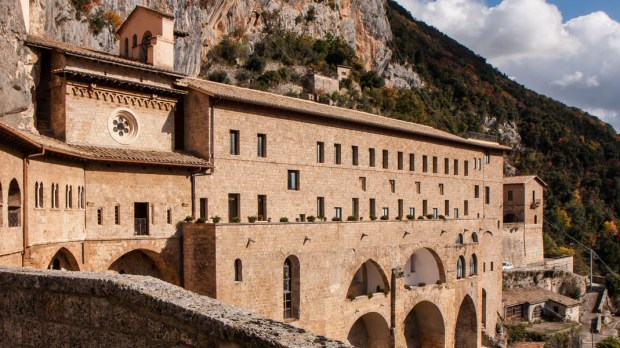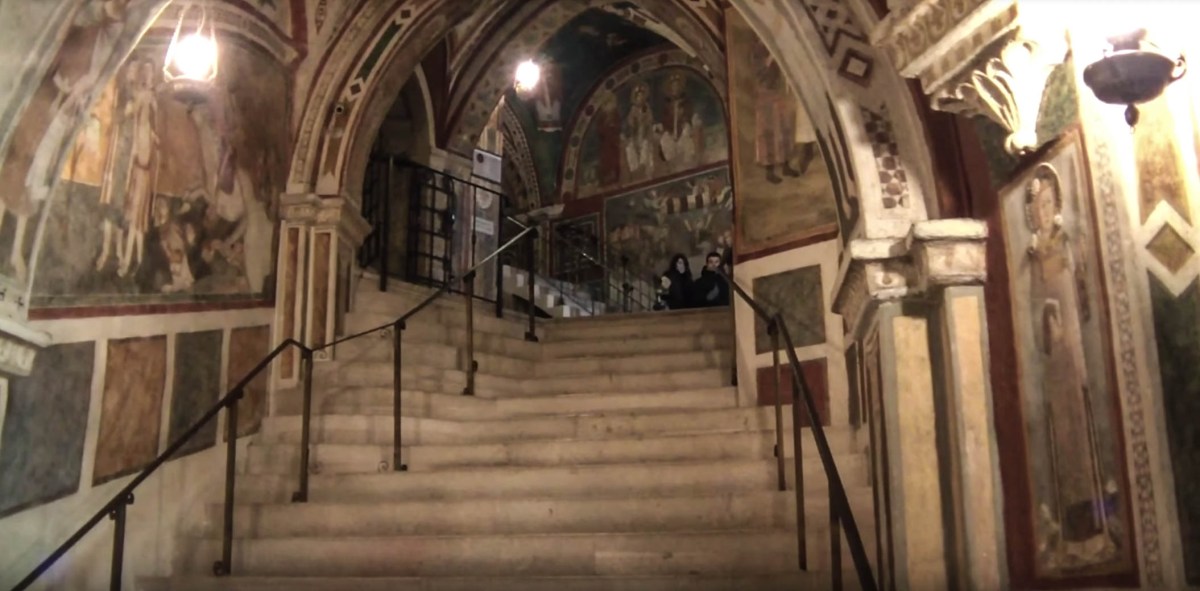The place where St. Benedict withdrew from the world to be a hermit for three years is the site of a monastic community that is open to tourists—and it is just a 30-mile drive from Rome.
St. Benedict of Nursia is a 6th-century saint who is credited with founding Western monasticism, lending his name to one of the orders that he helped establish. But before St. Benedict formed communities of monks, he spent three years in solitude on a cliff high the mountains. He was so isolated that food had to be delivered to him by shepherds via a rope system.
According to Gregory the Great’s Life of St. Benedict, the saint was so far removed from civil society that the shepherds first thought he was a wild beast:
About the same time likewise, certain shepherds found him in that same cave: and at the first, when they espied him through the bushes, and saw his apparel made of skins, they verily thought that it had been some beast: but after they were acquainted with the servant of God, many of them were by his means converted from their beastly life to grace, piety, and devotion. And thus his name in the country there about became famous, and many after this went to visit him, and for corporal meat which they brought him, they carried away spiritual food for their souls.
Benedict’s first foray into monastic life was a not a success: his harsh discipline sparked a backlash and attempted poisoning, prompting him to return to his cave, according to sacred-destinations.com. He later founded monasteries nearby—but not over the actual cave.
It was not until the 1200s that the Abbey of St. Scholastica, also known as Subiaco Abbey, was erected over the cave—known as the “Sacro Speco”—where Benedict had lived as a hermit.
The monastery sits right on a cliff, reportedly leading Pope Pius II to liken it to a swallow’s nest. A statue in the monastery depicts Benedict commanding the rocks to not crush the residents of the monastery, according to one description.
In addition to spectacular views of the valley and surrounding mountains, the monastery houses a number of medieval frescoes and artworks, including the Madonna and Child, the Four Evangelists, and a crucifixion of the Sienese school dating back to the 14th century. Other frescoes show scenes from the life of St. Benedict, according to sacred-destinations.com.
Visitors can also see the garden where Benedict once threw himself into thorns to stave off carnal temptation. Tradition holds that St. Francis of Assisi transformed the thorns into roses when he visited the monastery in 1223.
St. Benedict’s cave itself is in the Lower Church and visitors can pass through it. The cave features an altar with a 13th-century frontal and a fresco of Benedict contemplating the cross. The stairs leading out of the cave take visitors up to St. Gregory’s Chapel with a number of frescoes, including one of St. Francis that is believed to have been a contemporary portrait. (This information relies on the description on sacred-destinations.com.)
Click here for more information about the monastery and how to arrange a visit.
Can’t visit right now? Check out this virtual tour
.

